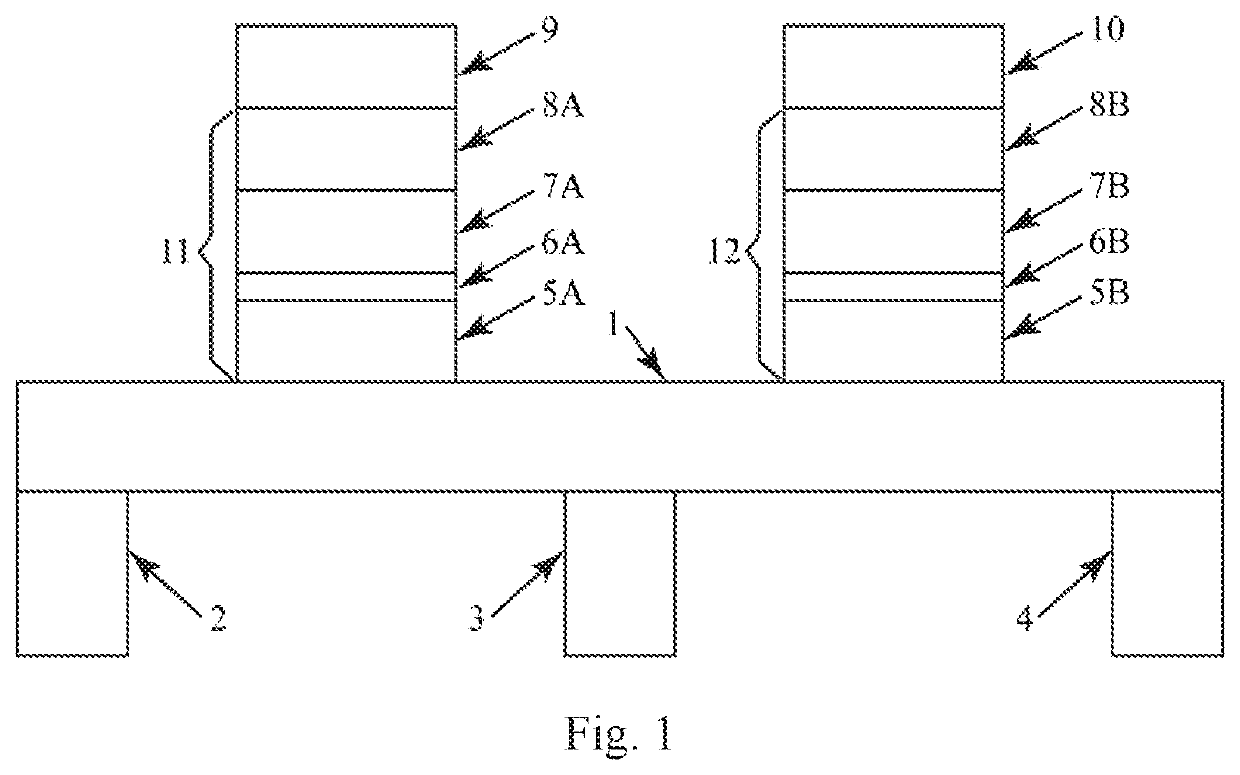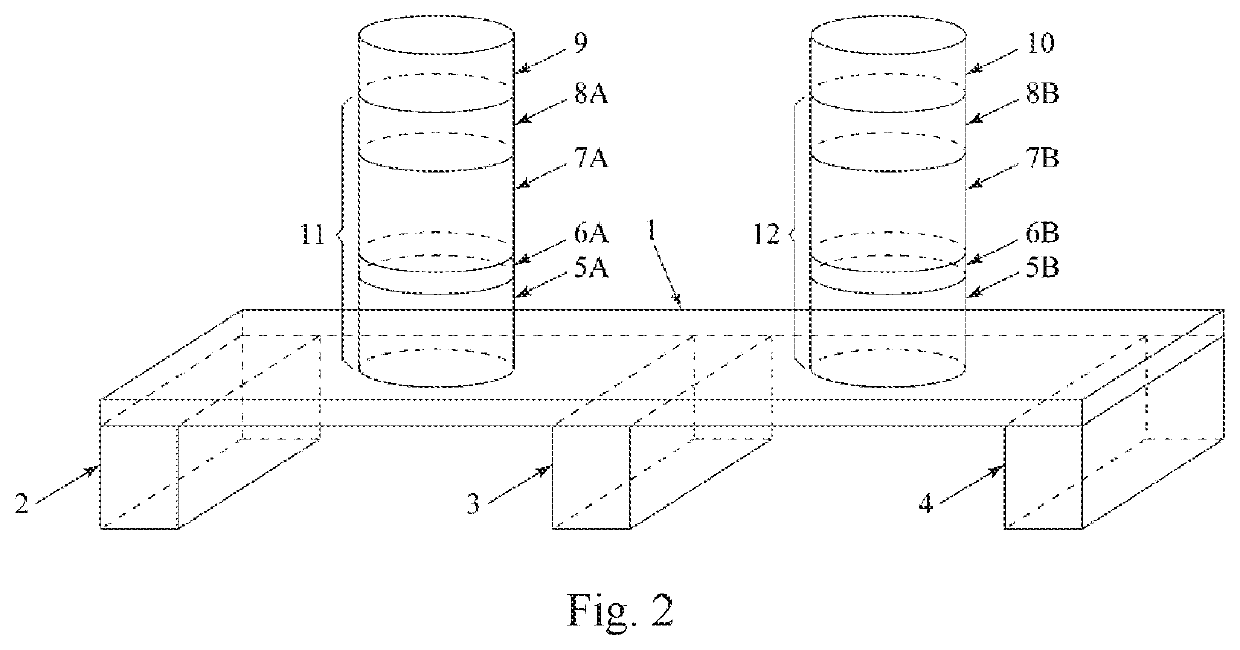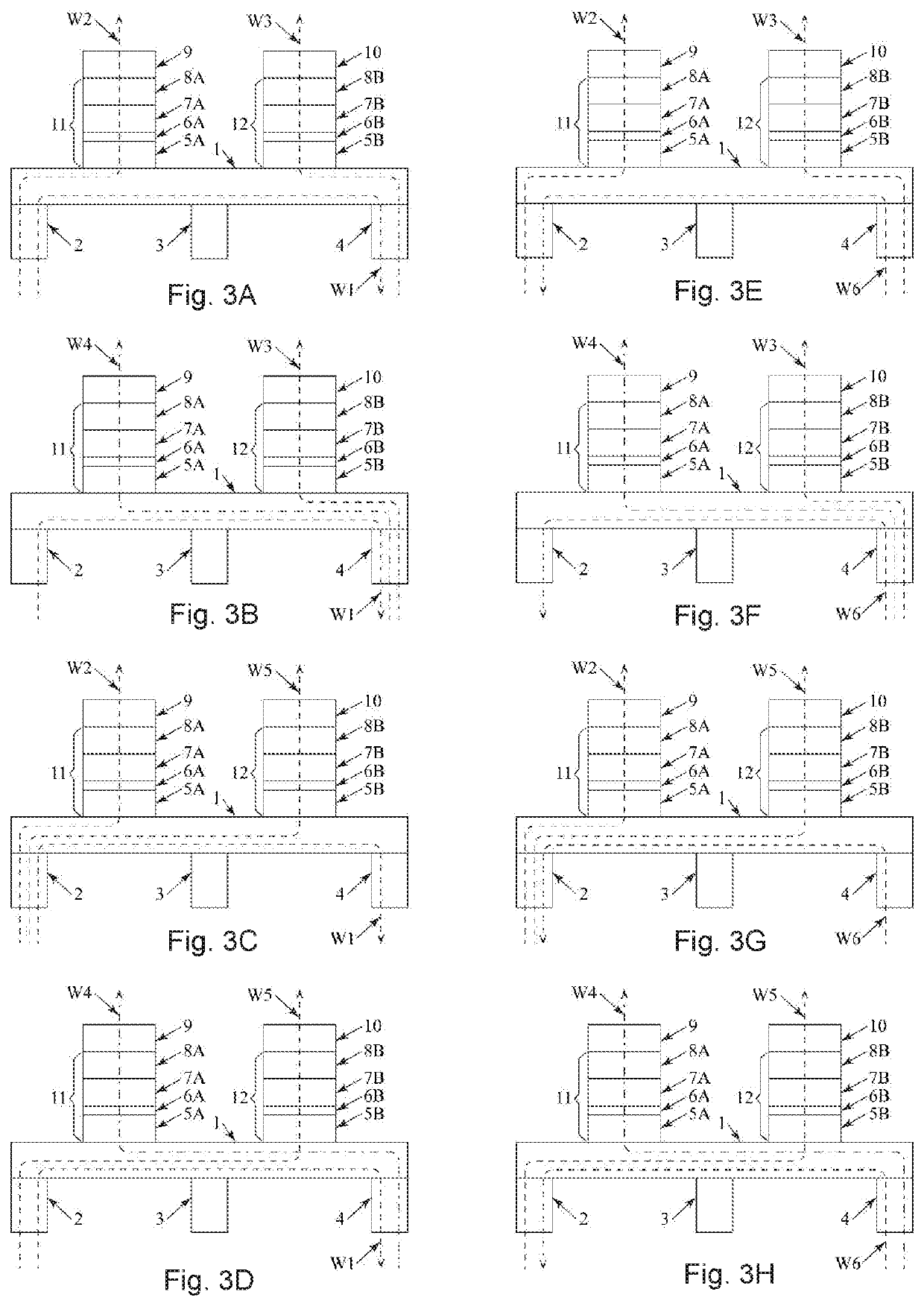Complementary magnetic memory cell
a magnetic memory cell and memory cell technology, applied in the field of complementary magnetic memory cells, can solve the problems of high energy waste, low power consumption, and inability to reduce the current required for the magnetic field writing technology, and achieve the effects of reducing read error rates, high read error rates, and overhead additional areas
- Summary
- Abstract
- Description
- Claims
- Application Information
AI Technical Summary
Benefits of technology
Problems solved by technology
Method used
Image
Examples
Embodiment Construction
[0084]The substantial features of the present invention are further described with reference to the drawings. The figures are schematic representations in which the thickness of each functional layer or region involved is not the actual size, and the resistance, current and voltage values in the operating mode are also not actual values.
[0085]Detailed exemplary embodiments are disclosed herein, and the specific structural details and functional details are only for the purpose of describing. Embodiments have been shown and described for the purposes of illustrating the functional and structural principles of the present invention and is subject to change without departure from such principles. Therefore, this invention includes all modifications encompassed within the spirit and scope of claims.
[0086]The present invention provides a complementary magnetic memory cell which can be used for constructing a magnetic random access memory as well as for designing a magnetic logic circuit....
PUM
| Property | Measurement | Unit |
|---|---|---|
| thickness | aaaaa | aaaaa |
| aspect ratio | aaaaa | aaaaa |
| aspect ratio | aaaaa | aaaaa |
Abstract
Description
Claims
Application Information
 Login to View More
Login to View More - R&D
- Intellectual Property
- Life Sciences
- Materials
- Tech Scout
- Unparalleled Data Quality
- Higher Quality Content
- 60% Fewer Hallucinations
Browse by: Latest US Patents, China's latest patents, Technical Efficacy Thesaurus, Application Domain, Technology Topic, Popular Technical Reports.
© 2025 PatSnap. All rights reserved.Legal|Privacy policy|Modern Slavery Act Transparency Statement|Sitemap|About US| Contact US: help@patsnap.com



